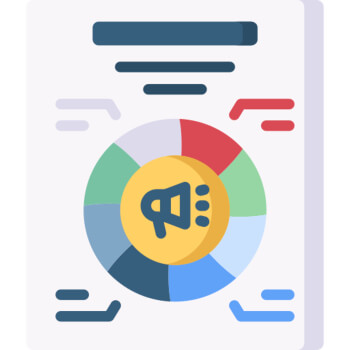how blogging works
10 Blog Posts You Can Create In 10 Minutes
10 Blog Posts You Can Create In 10 Minutes

No matter what kind of business you run online, there’s a good chance you have a blog. And if you have a blog, then you need a lot of content.
But here’s the problem…
Until now…
If you think you can’t create great content fast, think again. That’s because you’re about to discover 10 types of blog posts you can create in 10 minutes or less.
Take a look…
1. Create Articles Out Of PLR

Sometimes you might purchase PLR (private label rights) articles that you can minimally tweak and post right to your blog. In other cases, you might take excerpts out of PLR reports or ebooks, and then post these excerpts on your blog. Either way, it takes just minutes to create something unique and post it for your readers.
Here are some other tips for using PLR to create content:
- Use the transcripts from a PLR video to create an article for your blog. These transcripts may be included with the package, or you can create your own.
TIP: This is particularly easy if the video includes slides, as you can simply create your article from the content of the slides.
- Compile multiple pieces of PLR content to create something entirely new. For example, you might take excerpts out of three or four PLR articles to create an entirely new article.
And speaking of excerpts…
2. Take Excerpts From Your Products

Obviously, this is a super-quick way to create an article. But the other bonus of this particular strategy is that you can quickly insert a pitch at the end of the article to promote the full product.
Now, there are two ways to use these excerpts:
- One way is to simply pull the excerpt directly out of the product, create an introduction and conclusion, and post it on your blog.
For example, let’s suppose you have a report that lists ten strategies for cutting calories. You can excerpt out three to five of these strategies to create your article. Then at the end of the article, you can pitch the paid report as the place to get more of these great strategies.
- The second way is to cut some of the meat off the excerpt so that people will want to buy the product to get all the details.
Let’s take the example of the report with ten strategies again. This time you excerpt out all ten strategies, but you edit out some of the details. So readers will get an article that tells them what to do, but they don’t get the exact instructions of how to do it. They’ll need to purchase the product to get those exact instructions.
Next…
3. Make Link Lists

A link list can come in a variety of formats, including:
- A gear list. These are tools you use that you’d recommend to others. It saves beginners a lot of time and money, since they don’t have to do as much research.
For example, you might list all the plugins you use on your blog. Or if you’re writing to bodybuilders, you might make a list of all the “must use” supplements.
- A list of free resources. Here you might link to blog posts, reports, videos and other free sources of content to help your readers achieve some specific goal.
- A list of paid resources. In this case, you’d write a short review for each resource to let people know who can use it and its benefits.
- A mix of paid and free resources. For example, “The Top 10 Resources Every Aspiring Copywriter Ought to Read.”
Next…
4. Recap Your Recent Posts

The idea here is to create an “in case you missed it” list of your best posts in the last couple weeks or months. Of course you don’t need to just list blog posts. Instead, you can curate your own content across platforms, including your social media accounts and newsletters.
Another way to do it is by curating your best (recent) content around a very specific topic.
For example:
- Five Blog Posts That Will Change the Way You Think About Dieting
- The Three Posts Every Beginner Marketer Ought to Read
- The Five Keys to Improving Your Golf Score
All you have to do is write an intro to the post, list the resources along with a short explanation of why people should read each resource, and then wrap it up with a quick conclusion.
Next up…
5. Interview Someone

Here’s a great way to create content fast: let someone else create the content for you.
Here’s an example email to send to land these interviews…
Subject Line: I’d like to feature you on my blog, [name]
Hi [First Name],
My name is [Your Name], and I run the popular [type of] blog over at [domain]. The reason I’m writing today is because I’d like to interview you and feature this interview on the blog.
The interview is just [small number] questions, so it would only take about [small number of minutes] to complete.
In return, you’d get a byline and link back to your site, along with exposure to my [number] of readers and visitors. I’ll also send out the link to my [number] of newsletter subscribers and [number] social media followers.
If you agree that this sounds like a great way to showcase your business to a targeted audience, just reply back and I’ll send over the questions right away.
I look forward to hearing from you!
[sign off]
——-
Remember this: the easier it is for someone to comply with your request, the more likely it is that they’ll say yes. So don’t make your interviewee have to spend hours answering questions. Instead, shoot a couple quick questions their way that they can answer in just minutes. Then if you want more info, send a couple follow up questions.
Here’s why…
Once a person has answered your initial questions, they’ll feel invested and committed to your project. So if you ask for 10 more minutes of their time to answer a couple additional questions, they’re very likely to say yes.
6. Tweak A Previous Article

The next idea is to comb through your existing content, find popular articles, tweak them, and republish the new version.
For example:
- If you previously published a list of ten tips, then excerpt out five of those tips, expand on them, and republish the new article.
- Update an old article with new information, such as new research that has come on the scene since you originally published it.
- Have you changed your mind about a product, idea or other topic? Update an older article with your revised opinion.
7. Turn Existing Content Into An Infographic

Another good way to quickly create content is to simply change your existing content into a different format. And one way to do this is by turning an article into an infographic.
Here are examples of articles that would make good infographics:
- An article discussing multiple ways to boost conversion rates on a website.
- An article explaining how metabolism works.
- An article that talks about different garden pests and how to get rid of them using organic pest control methods.
Just be sure your infographic includes social media buttons next to it, because this is the kind of content people really like to share.
8. Ask For Content From A Vendor

Are you an affiliate for a product or service? Then one great way to quickly get your hands on some free content is by asking the product vendor to supply it for you.
However, you want unique content, right? So don’t go straight to the blog post category, as all the other affiliates are likely copying and pasting those articles to their blogs. Instead, look at other content such as reports, emails and similar. Find something suitable, and then ask the vendor if you can modify it for your blog, such as taking an excerpt out of a report.
If you’re not finding what you like within the affiliate center, then write to the vendor and request an article. The vendor is more likely to give you content – especially exclusive content – if you’ve already proven yourself to be a good affiliate.
TIP: Here’s a powerhouse combo you can use to promote affiliate products while getting unique content for free: ask the vendor for an interview. Most vendors will be happy to get the exposure and extra sales. You can post a text interview, or you might even consider doing a short webinar or podcast.
9. Do Multimedia Posts

So far we’ve been talking about how to quickly create text articles. However, you don’t need to write a single word if you don’t want to.
Instead, pick up a camera to do a quick video on the topic of your choice.
TIP: You can also simply turn on a microphone to do a quick podcast. You don’t even need expensive tools, as a simple tool like Audacity will let you capture and edit audio for free. You can get this tool at http://sourceforge.net/projects/audacity/files/.
For example:
- Turn the camera on and just spend five minutes talking about your top five weight loss tips.
- Film yourself trying out and reviewing a new product.
- Give a demo on camera, such as how to teach a dog to sit.
- If you’d like to demo something on your screen, such as how to set up a blog, then use screen-recording software such as Camtasia.
Then all you have to do is upload the video to YouTube.com (for greater exposure), and then post the embedded video on your blog.
10. Copy And Paste Your Emails

One very good source for articles and other content are your own emails. Here I’m talking about two things:
- If you broadcast an announcement, article or other content to your mailing list, then put this content on your blog as well.
TIP: Let your newsletter readers know you’re posting the content on your blog, and then encourage them to click through and discuss the topic. - If you reply to a customer’s question and you realize it would make a good post, then use it. Naturally, you won’t use any of the customer’s identifying information. Instead, you might say something like this at the beginning of the post…
“Just about every week, the same question tends to pop up in my email from people just like you. Take a look and see if you’ve wondered about this topic too…”
Conclusion
As you just discovered, you don’t need to spend a lot of time creating great content. All you need is ten minutes or less, and you can have a blog post ready to go out the door.
If you really want to know more about the power of blogging, you can take a look at the Rapid Blogging Blueprint training course or if you just want a few pointers for now you can grab the featured resource below for a free blogging report; download, read it and take action 🙂

Scheduling A Series For Your Blog
Scheduling A Series For Your Blog

A series is a good way to keep people tuning back in for more. It works the same way on television – you tune in weekly to see what happens next after you’ve seen a cliffhanger or an upcoming episode snippet.
But what can you do a series on for your blog?
Then you can break down each step of your implementation process over the next several days. If it’s a text product, do a chapter a day. If it’s a video product, do a video a day.
Always link to the previous and subsequent blog posts so that a new visitor who happens to land on your blog in the middle of it can find their way back to the beginning.
Step-by-step tutorials also make a great series for you to blog about. For example, let’s say someone wanted to know how to start a container garden. You could go through a different topic each day, such as:
- Planning your container gardening space
- Picking which fruits and vegetables you want to grow in each season
- Building your containers
- Getting the soil just right
- The planting process
- Dealing with pests
- Harvesting…etc.
Q&A sessions with your audience work well for a series, too. Invite your subscribers to ask any questions they have – you can even schedule certain days to be “Mailbox” days where you answer audience questions.
7 Ideas For Individual Blog Posts

If you’re not doing a series but posting individual blog posts, there’s a whole host of options for you! Make a list of these and try to mix it up on your blog so that you’re not using the same old approach on a continual basis.
Top tip lists make great blog posts. These are tips you gather and then blog about, explaining each one. For example: 7 Ways to Fall Asleep Faster, 6 Ways to Say No to Sweets When You’re on a Diet, the Top 3 Tips to Help You Save Money at the Grocery Store, etc.
Reviews were mentioned in the last section as far as series that you can do. But they can also be done for individual blog posts. You don’t have to draw it out if it doesn’t call for it – or if it’s for a tangible item that you want to go over.
Rants about a topic can generate a buzz for your blog. You don’t want to be nothing more than a person who rants all of the time, but if you find something in your niche that needs to be exposed or discussed, don’t be afraid to talk about it!
Curated content is something that everyone is buzzing about in the blog world. You can use short snippets where you quote or reference something from a magazine, news site, book or other blog and launch a discussion about it on your blog.
Then you add your own commentary about it. For example, you might be writing a blog post about hot flashes – and the Mayo Clinic has an article about it. You can take a quote from that, link back to the full article, and discuss their findings.
Think of it like a dinner party where you say, “Oh did you hear about …” and then you add your own opinions, insights, and even disagreements about the subject matter.
Categorized posts will help you develop content for your blog. Some people map out the categories for their blog as they go. But if you have categories ahead of time, it can help you develop content just for that purpose.
For example, if you ran a health blog, you could do a post on health tips for boys, girls, teens, men, women and seniors. Then you can go through your editorial calendar and say, “I haven’t done anything on senior health this week, so I’ll do that today!”
Breaking news is always beneficial when blogging. Usually, this will help you see a spike in traffic because it’s new and there won’t be as many posts about it as there will be later.
Set up a Google Alert so that you get notified when news happens about certain topics. But also go out and search Google and specific news sites for breaking topics yourself.
PLR (private label rights) can give you great ideas. You can buy PLR for about $1 per page – and just rewrite it or use it as springboard content to give you an idea of what to blog about for that day!
Soliciting Guest Bloggers For Filler Content

Guest bloggers will often seek you out once your blog becomes a traffic hub for a particular niche. You won’t want to accept everyone who requests a spot on your blog.
But you may want to use a guest blogger from time to time, as long as they continue with the purpose and direction of your own blog. You can approach people or post blog topic jobs – sometimes you’ll pay for the post and sometimes the blogger will be happy with a link back to their own site.
Or, you can find new bloggers who are eager to get some experience under their belts. Either way, make sure the piece is suitable for your audience and don’t let the topic veer off course.
If you really want to know more about the power of blogging, you can take a look at the Rapid Blogging Blueprint training course or if you just want a few pointers for now you can grab the featured resource below for a free blogging report; download, read it and take action 🙂

Filling Your Blog Editorial Calendar
Filling Your Blog Editorial Calendar

When you get an idea to become a bona fide blogger, you really want to start off on the right foot. You know how blogging works and you take the time to find out which platform is best, which plugins will help you make the most of your visitors’ experience – but you get stuck when it comes time to create the actual content for your blog.
When it comes time to instruct you on creating content, they’re often just as lost as you are about the process, so you’re left struggling in front of your audience. It can be embarrassing and it can hurt your blog traffic if you start abandoning your blog frequently to wait for inspiration to strike.
You have to take a three-pronged approach to blogging. First, get everything organized. If you’re scattered on your blog, it confuses the readers, search engine spiders – and even you.
Then you want to map out a schedule for your blogging efforts. Having a deadline for yourself can benefit you and help you work towards a specific goal, not just something vague.
Last, you want to begin creating your content – and we’re going to cover three options for you to choose from – a series, an individual post, or a guest blog post (and you can mix these up – you don’t have to choose from just one).
Getting Your Editorial Calendar Organized

There are two things you can do to get organized. The first is a planning calendar and the second is an editorial calendar, which is for completed work that you are doing on your blog.
You can either buy a calendar or print one out from a site like this: http://www.pdfcalendar.com/monthly/. Print one out for the current month, and possibly the next month. You can schedule it as far out as you like.
This is your planning calendar. You can use this to fill in the days with whatever you’ll be blogging about (and we’ll go over that shortly). This helps you plan what needs to be written, and when.
This is perfect for using yourself or for whenever you’re using a freelance ghostwriter to create your blog content and you want to share it with them so that they can plan for publishing dates.
As soon as you upload a new post, you can drag the post around on your calendar to wherever you want it to be for it to go live. This can help if you have some timely information that needs to bump a previously scheduled topic.
By using a calendar plugin, you can glance quickly at your blog schedule and see where there are gaps. You want a consistent publication schedule, and we’ll look at that in depth next!
How Often Should You Be Blogging?

Many people want to know how often they have to blog. Well if you feel that way, you probably shouldn’t be blogging in the first place! Blogging should be for someone who can’t WAIT to wake up in the morning and share more information with people.
If you lack that, it could be a sign that you’re in the wrong niche. But let’s talk about traffic and authority. You’ll see some leaders in a niche who blog very infrequently.
For bloggers who want to use this platform as their primary source of audience engagement, then you need to make a commitment to show up and share on a regular basis.
The more, the better – but there’s an asterisk to that*
* It’s only better when there’s more if there’s something valuable that you’re sharing. In other words, don’t blog just to blog. Don’t slap up meaningless content that dilutes the truly valuable blog posts you have just because someone told you to blog 3 times a day.
What you ought to do is go through and develop your editorial calendars to see how much content you can conceivably create. You’ll be surprised at how many ideas you generate once you understand how to look for good blog ideas.
As far as search engine bots (spiders) are concerned, they like to see a certain amount of “freshness” in your blog. They typically start off visiting your blog once every couple of weeks, but they narrow their visitation schedule to index your site if you blog regularly, and this looks good and helps you get content indexed faster.
It’s also helpful to your blog subscribers if you blog frequently. If this is a topic they’re interested in, then you want to be the go-to authority figure in your niche – the person they know will have continual updates and fresh information.
If you can only manage to post 2-3 times a week, then do it two to three times a week, but ensure your posts are high-quality and of a decent length i.e., at least 1000 words long.
However, there is such as thing as blogging too little. When you start going weeks or months without blogging, don’t expect a blog audience to stick around and become subscribers and fans of your content. In fact, they won’t even know who you are!
If you really want to know more about the power of blogging, you can take a look at the Rapid Blogging Blueprint training course or if you just want a few pointers for now you can grab the featured resource below for a free blogging report; download, read it and take action 🙂

Can You Really Make Money By Blogging?
Can You Really Make Money By Blogging?

Blogging has been around for a long time on the Internet. It started out as a creative outlet for people to take their personal journals online to share with family and friends.
It branched out into outlets of information to be shared by experts and now people use them for a money-making opportunity.
Millions of people visit blogs every day for information or entertainment purposes. A lot of the blog visitors are ones that come back to check in on the latest entries into a blogger’s world.
They link their blog to your blog, which increases your reader base. The blog’s traffic becomes so huge that your chances for earning increase. Using AdSense ads are the most popular way to generate income from your blog.
By strategically placing the ads on the blog, you can entice visitors to click on them, with each click earning you a share of the profits Google takes in. While a couple of clicks earn you very little, a high flow of traffic and clicks earns you a substantial amount.
To make a lot of money with AdSense, you have to drive traffic to the blog. The most important concept with AdSense is to remember that you have to make the ads visible and not hidden somewhere in the blog where they can’t be seen. The more people who click away, the more money you’ll make.
Another way some people make money from their blogs is by using advertisement space. Advertisers scramble to place one of their banners on the more popular blogs. They’re willing to pay you based on the traffic numbers you generate and the prime space available within your blog.
There are many ways you can monetize ad space. You might charge a flat fee, take a commission based on the number of click-throughs, or make a deal where you get a percentage of the sale of a product, much like an affiliate marketer does.
Choose a topic that has a high number of searches, launch a free blog at Blogger.com or WordPress.com, and strategically implement your ads and offers to start seeing a steady income build over time.
However, if you want to take blogging seriously, you need to consider paying for hosting and a domain name and using WordPress.org because you will have much more control over your blog and this is critical for your success in the long run if you are thinking about using your blog as a serious money maker.
Now you have your blog up and running, you need to get traffic to it and spread the word about it and there are a number of ways to do that.
Where To Advertise Your Blog For The Best Results

Getting your blog set up is the easy part of the process. Now comes the difficult part – getting visitors! You need to find traffic to come to your blog or it won’t be a profitable investment of your time.
Start with the free options and as you begin to see a return on your investment of time, you can invest some profits back into marketing your blog with paid options.
Free
- Join message board communities. This is a simple way to advertise your blog. Interact with your fellow users and advertise your blog in your signature line, if it’s allowed. If it’s not allowed, there’s usually a folder available within that forum that does allow you to advertise your sites. Use them.
- Join a social networking site. These sites are a good way to network with like-minded people who are interested in the same subject your blog is about. Join the community and get to know the other members and then you can supply them with a link to your blog. Many in social networking circles provide cross-promotions, so you’ll probably accumulate a lot of valuable backlinks to your blog.
- Utilize social bookmarking sites. Write a great thought provoking post on your blog and submit it to sites like Digg.com or del.icio.us. There are hundreds of people who spend hours at these sites searching for good websites to check out. Your blog can get a surge of traffic through this strategic and viral sharing method.
- Join a blogging community like BlogEngage (Paid) or DoSplash. This offers you a way of connecting with other bloggers who may do a review of your blog on theirs, which would help drive more traffic to your site.
Paid
- Use advertising campaigns like Google AdWords. Place an ad on the search engine result pages and pay only when someone clicks on the link. Make sure you use the best keywords to get the ad noticed, so that you can drive more traffic to your blog.
- Use text link advertising. Contact some of the more popular blogs in your niche and see if they would be willing to sell you some advertising space through text links. If the price is right, take the chance to have traffic driven to your site from theirs. Not all sites will be willing to do this, so keep trying different ones until you get one to say yes.
And remember, if you want a premium training on blogging the right way, check out the Rapid Blogging Blueprint which includes over the shoulder training on blogging the right way.
Or, if you just want some more basics to see whether blogging is right for you, check out the featured resource below for a free Blogging Fundamentals report; download, read it and take action 😊

Make Money Blogging As A Career
Make Money Blogging As A Career

Blogging has been a widely known concept for quite some time now. While they may not know the technical ins and outs of how it works, many men and women have heard about blogging in pop culture.
Julie and Julia is a good example of this. It’s a movie that originated from a true-life tale of Julie Powell, who set out to blog about her experiences cooking each of Julia Child’s 524 recipes from her book Mastering the Art of French Cooking in just 365 days.
The benefits of blogging are huge; it is free or cheap to start so the risk-reward benefits are huge. Starting a blog is simple; you can start with a WordPress blog for free if you want to, but I would suggest paying a few bucks for a domain name and hosting if you want to take the whole thing seriously and really want to make money blogging.
How Blogging Works And Where Most People Go Wrong
![]()
Looking for “blog jobs” online is something many people do these days. They know they love to post on Facebook, and they hate their current 9-5 job, so they think they’d love to get hired as an official blogger for a company.
But you have to understand that when a company sets out to attract a blogger to represent their business online, they don’t want an amateur blogger. They want someone who knows how blogging works and understands the business side of blogging – because when you’re a blogger, you’re building a brand (or destroying it, in some unfortunate cases).
When you start looking at professional blogger-for-hire jobs, you’ll see that they want you to understand online marketing fully, they want you to deliver a certain number of blog posts per week (usually five), and sometimes want you to go out and find guest blogging opportunities where you can blog elsewhere and link back to their main blog.
It’s not a good career for someone who is new to blogging and thinks it “might be fun.” This is for seasoned professionals – and sometimes the company will even want to investigate to see what kind of current reach you have with your own content in the social media world.
If you’re already at a company that doesn’t have an online presence, then maybe you can make a suggestion that they allow you to head up that operation. This would give you a little experience so that you could then go out and brag about launching and generating a good buzz for your current company.
Blogging To Make Money
![]()
The do-it-yourself blogging to make money route is far more rewarding. It’s something you can do anytime – in the morning before work, on your lunch hour, after work and on the weekends.
Then when it becomes profitable, you can use it to replace your current income and begin blogging fulltime. When you choose this path, you have much more personal satisfaction in your blogging career.
If you want to learn more about monetizing your blog, check out this post here.
You have to treat this like a business from the very start. If you start blogging haphazardly, then your readers will recognize that it’s an amateur site. Yes, some will become fans anyway – but others want to know they’re following a leader in whatever niche you choose to blog about.
How do you pick a niche for your blog? Some blogs have a multitude of topics – from entertainment to fashion to business to health. You can do that, but unless you have a team of contributors, it’s hard to maintain the momentum needed for a broad blog like this.
A better option might be to narrow down your focus into something that you really love. It can still be broad – like a women’s health blog for example. But it’s not as narrow as “everything” or “health in general” (including both genders).
You can even drill down more and go with one form of women’s health, like menopause or pregnancy. You don’t even need to be an expert in it – it’s all about sharing information and as you learn, you can share!
If you dread it because it bores you or it’s depressing, then you won’t help your readers and the blog won’t become profitable for you.
Aside from the overall slant, you get to choose what each individual entry on your blog is all about. If you were blogging for another company, they might tell you what to blog about each day – even if you found it mundane.
You can set an entire editorial calendar for your blog where you choose which topics are presented to your readers. You also get to pick the tone for the blog pieces.
For example, let’s take the diet niche. You could be a fad and trend diet blogger who emphasizes fast weight loss – or someone who harps on the fact that weight loss should just be the adoption of better nutrition and exercise and the pounds should come off slowly.
Benefits Of Blogging: Developing A Relationship With Your Readers
![]()
Having a relationship with your readers means they value your blog, and they share the link to it with other people. You want that type of connection because as a professional, the traffic and branding that you gain will be priceless.
When blogs have a loyal readership, they enjoy a fantastic word of mouth traffic flow. While many bloggers are out there buying links back to their site and paying people to help them get traffic, you can do it all for free.
Do some preliminary keyword research to find out what people want to know in your niche. Using the menopause example, you could go to UberSuggest.org and type in what are menopause.
This is known as a sentence starter – and it gives you some insight into what type of blog post you might want to do, such as:
- What are menopause hot flashes like?
- What are menopause symptoms caused by?
- What are the best menopause vitamins?
A good keyword tool gives you help on what to blog about. But there’s more that you can do to find topics. You can look in forum threads and see what people are asking.
You can also simply invite your readers to submit questions to you. You can do this on your email autoresponder opt in form, or have a special contact form on your blog where people can engage with you that way.
Whenever someone emails you with a question, you can assume there are more people out there who are wondering the same thing. Use those questions as fodder for your blog topics.
When you start blogging about all of these things, it makes the audience feel like you’ve really got your finger on the pulse of the marketplace – like you have great instincts.
Next, write in a highly conversational style and end each blog with an invitation to connect. People need to feel like you’re speaking just to them – even if you’re not.
When you end a blog post, you can ask a question or invite people to share their own $0.02 about the topic in the comments. Make sure that whatever comment system you’re using, it’s easy to find – because some are almost hidden.
Participate in the conversation that goes on in your blog comments. If people are kind enough to take you up on your invitation, then make an effort to have a dialogue with them.
Thank them for their comment, call them by name, and open up a discussion about what they had to say. You can use a plugin to help the comments become “threaded,” which helps all of your readers see who was responding to who.
Supporting Yourself Financially And Make Money Blogging

When you start blogging for profit, you should be consistent with your efforts. You should blog regularly – daily if possible, but at least several times a week. There are a few ways you can make money as a blogger.
Build a list from your blog so that whenever you have a new blog post, you can notify people about it. Also have an RSS system set up for people who use RSS feed readers to get notified of your new content.
Whenever you have a list, it gives you a certain amount of power – the power to instantly communicate with your target audience when you are selling or promoting products.
Sell ad space for a certain amount of profits. You can arrange a specific area of your blog for ad space that people rent on a monthly basis, paying the ad revenue to you directly.
If you go this route, make sure you have specifics in place to control what kinds of ads can get placed on your blog – all the way down to the colors and animation of it if you want.
Sign up for AdSense, too. This can help you get clicks and revenue. You can put different sized ad banners on your blog, from buttons to skyscraper ads. You can include images or go with just text.
One thing you have to remember whenever you place any ads on your blog is that yes, it gives you some money when people leave your site for somewhere else – but in leaving, it also means someone else is capturing their name and email address and selling something to them, not you.
Promote tangible products as an affiliate. You can sign up as an Amazon Associate and promote anything they sell there that they offer a commission on. Using our menopause example, if you promoted a chilled pillow, you could earn a percentage of each sale from your blog post.
Promote digital products as an affiliate. Digital products can be found at sites like ClickBank.com. You can sign up for free and get a hoplink (affiliate link) where you earn around 50% for each sale.
Offer services from your blog. Freelancing like writing, graphics, or other services can be offered right from your blog. Coaching is something you can offer. Many people pay top dollar for one-on-one coaching sessions via Skype or even email!
Blogging can be a very fun and very profitable venture if you approach it correctly. Don’t make the mistake of flying by the seat of your pants. If you do this, your blog will be scattered with topics, have no set monetization plan, and you’ll end up unhappy with the effort you’ve put in.
With proper planning and enthusiasm, you’ll never need to look for “blogging jobs” again – in fact, you might be the one putting out feelers for a professional blogger to come onboard and help you with your content needs! Being in a position of power makes a world of difference.
And remember, if you want a premium training on blogging the right way, check out the Rapid Blogging Blueprint which includes over the shoulder training on blogging the right way.
Or, if you just want some more basics to see whether blogging is right for you, check out the featured resource below for a free Blogging Fundamentals report; download, read it and take action 😊






